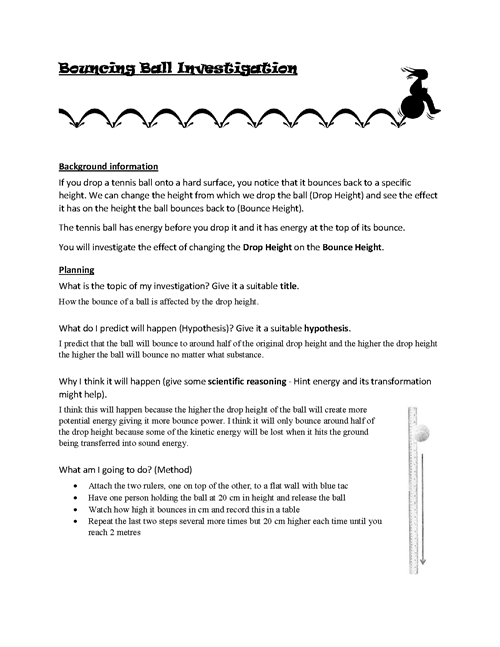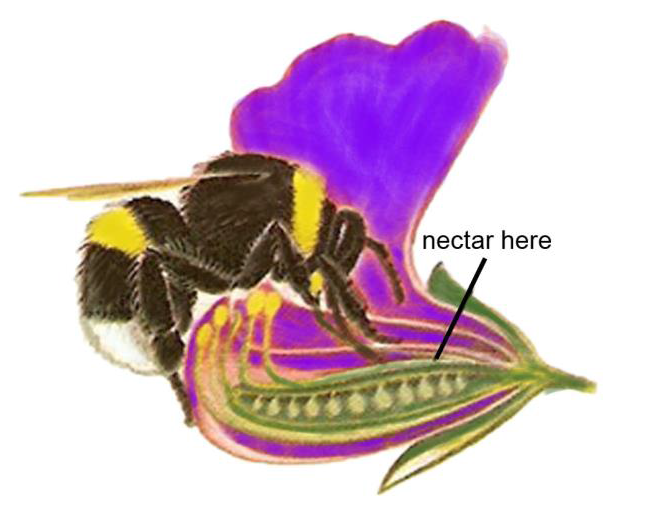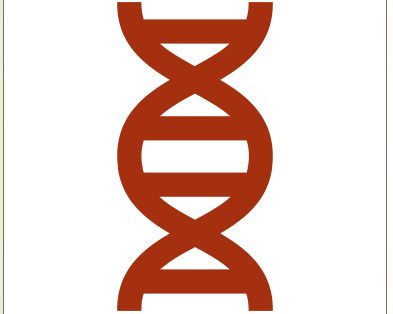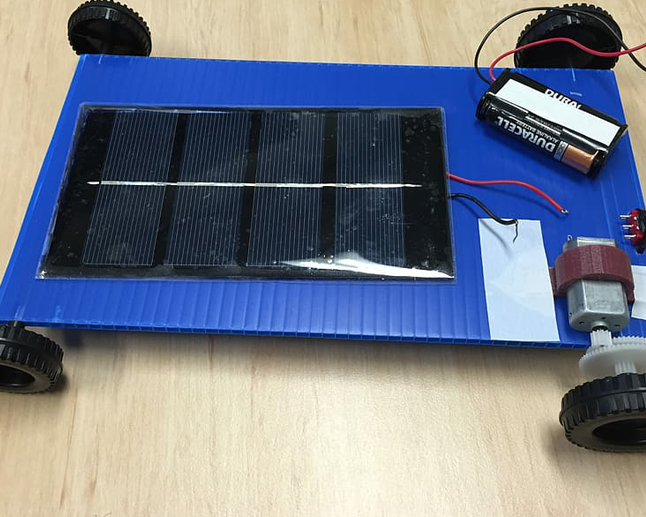- Home
- Resources
- Work samples
- Samples
- Bouncing balls – ABOVE (Year 8)
Science
Year 8
Above satisfactory
Bouncing balls
Summary of task
Prior to the sample task, students investigated forms of energy and energy transfers and transformations.
As part of the unit, students were required to undertake a practical investigation to identify the relationship between drop heights and bounce heights of a variety of balls. A report-planning scaffold was provided. Students were required to interpret their results with reference to energy transfers and transformations. The task was completed over two 50-minute lessons.
Achievement standard
By the end of Year 10, students analyse how the periodic table organises elements and use it to make predictions about the properties of elements. They explain how chemical reactions are used to produce particular products and how different factors influence the rate of reactions. They explain the concept of energy conservation and represent energy transfer and transformation within systems. They apply relationships between force, mass and acceleration to predict changes in the motion of objects. Students describe and analyse interactions and cycles within and between Earth’s spheres. They evaluate the evidence for scientific theories that explain the origin of the universe and the diversity of life on Earth. They explain the processes that underpin heredity and evolution. Students analyse how the models and theories they use have developed over time and discuss the factors that prompted their review.
Students develop questions and hypotheses and independently design and improve appropriate methods of investigation, including field work and laboratory experimentation. They explain how they have considered reliability, safety, fairness and ethical actions in their methods and identify where digital technologies can be used to enhance the quality of data. When analysing data, selecting evidence and developing and justifying conclusions, they identify alternative explanations for findings and explain any sources of uncertainty. Students evaluate the validity and reliability of claims made in secondary sources with reference to currently held scientific views, the quality of the methodology and the evidence cited. They construct evidence-based arguments and select appropriate representations and text types to communicate science ideas for specific purposes.
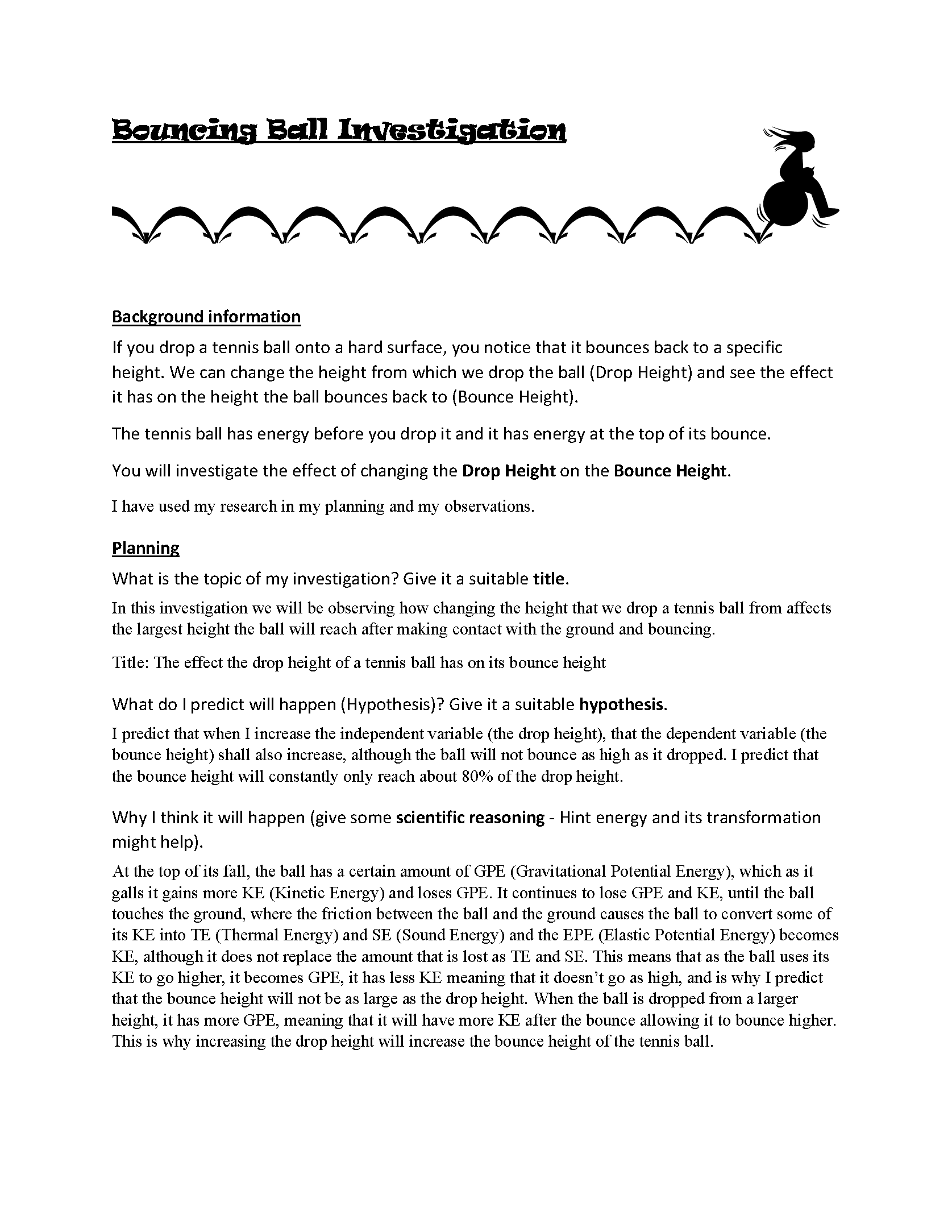 1
Annotation 1
1
Annotation 1
Identifies and describes in detail energy forms and transformations occurring in the system
-
Annotations
-
1
Annotation 1
Identifies and describes in detail energy forms and transformations occurring in the system
 1
Annotation 1
1
Annotation 1
Describes steps of experimental method, emphasising measures that ensure fair test 2 Annotation 2
Identifies variables to be changed and measured and provides detailed analysis of variables to be controlled
-
Annotations
-
1
Annotation 1
Describes steps of experimental method, emphasising measures that ensure fair test -
2
Annotation 2
Identifies variables to be changed and measured and provides detailed analysis of variables to be controlled
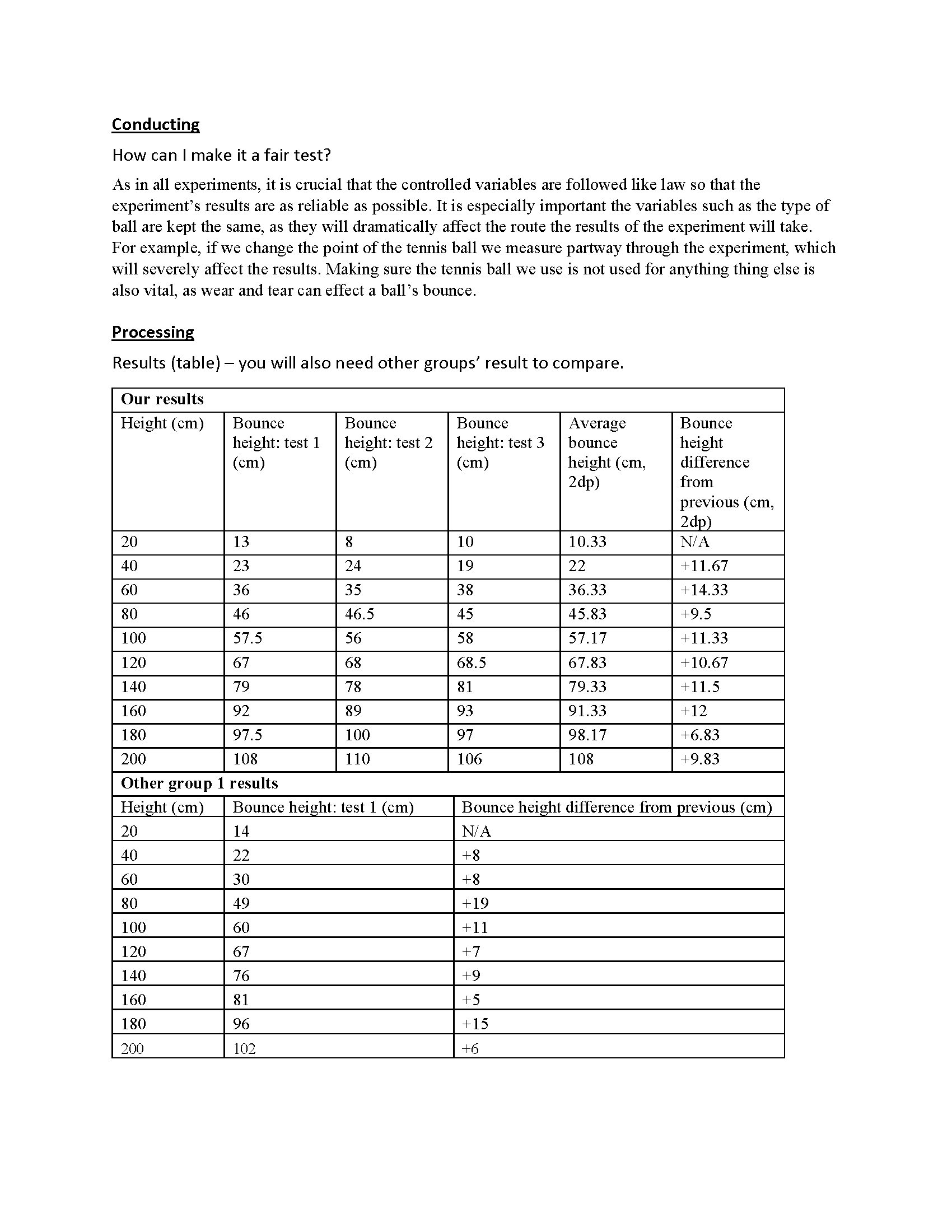 1
Annotation 1
1
Annotation 1
Identifies and explains reasons for actions that will contribute to conducting a fair test 2 Annotation 2
Creates appropriately labelled table to present measured data and averages
-
Annotations
-
1
Annotation 1
Identifies and explains reasons for actions that will contribute to conducting a fair test -
2
Annotation 2
Creates appropriately labelled table to present measured data and averages

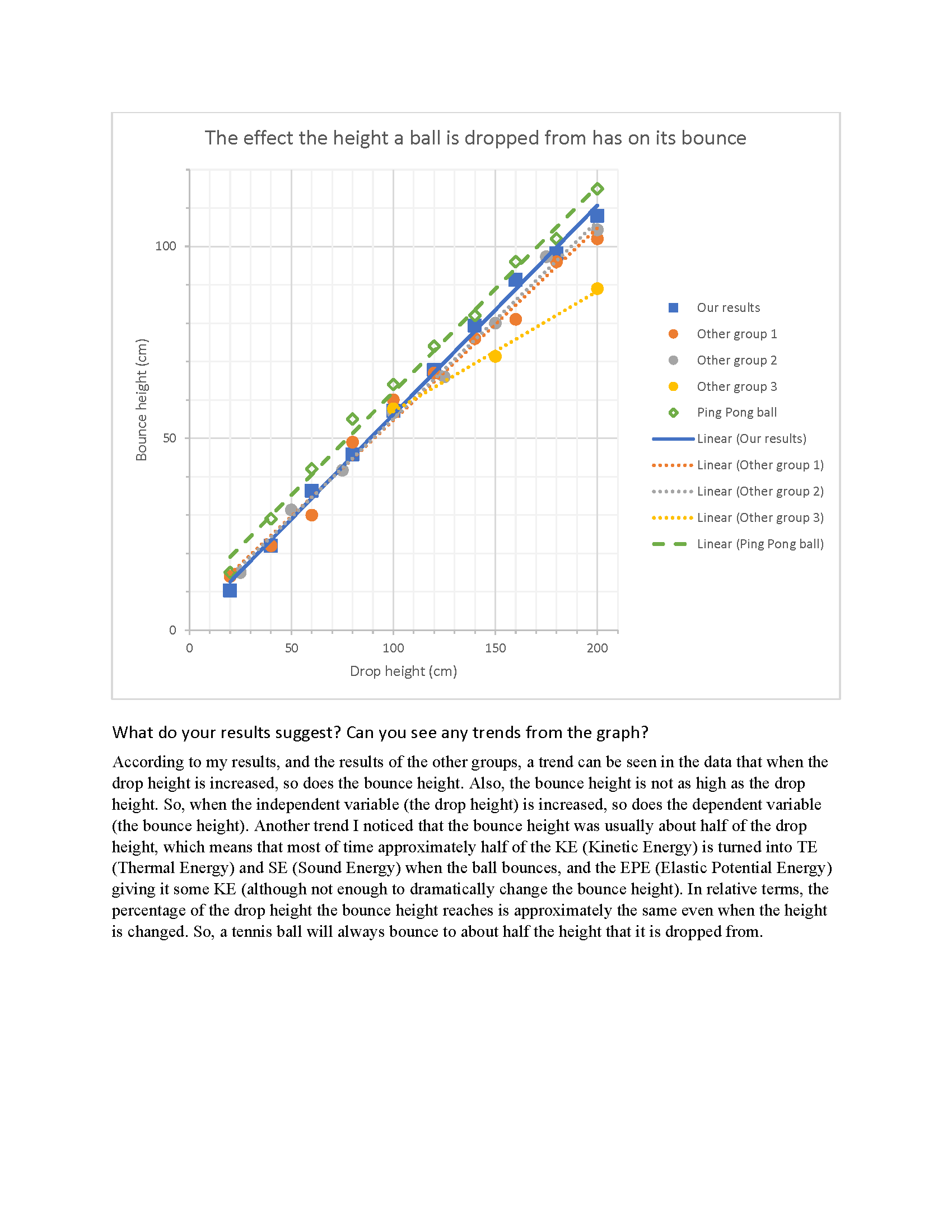 1
Annotation 1
1
Annotation 1
Constructs line graph that follows graphing conventions and uses trendlines to clearly demonstrate trend in data 2 Annotation 2
Analyses patterns in data to justify observed trend and uses mathematical thinking to identify key relationship between variables
-
Annotations
-
1
Annotation 1
Constructs line graph that follows graphing conventions and uses trendlines to clearly demonstrate trend in data -
2
Annotation 2
Analyses patterns in data to justify observed trend and uses mathematical thinking to identify key relationship between variables
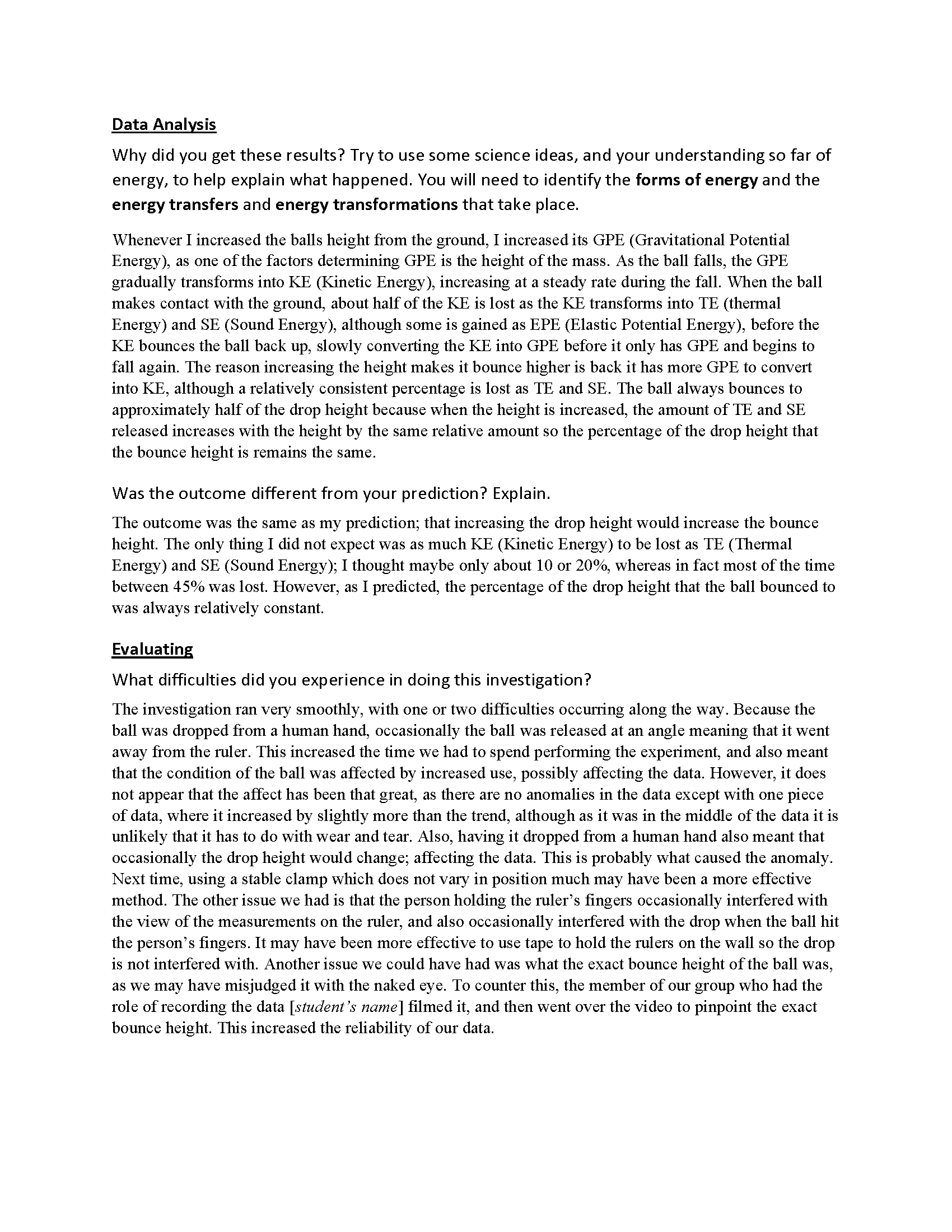 1
Annotation 1
1
Annotation 1
Explains observations through thorough analysis of energy transfers and transformations that occurred in the system 2 Annotation 2
Compares results with predictions and interprets observed discrepancies with reference to physical processes and measured data 3 Annotation 3
Identifies experimental challenges and describes in detail how they may have impacted on data accuracy 4 Annotation 4
Uses mathematical reasoning to estimate effect of experimental error on results 5 Annotation 5
Describes how use of digital technologies has increased reliability of data
-
Annotations
-
1
Annotation 1
Explains observations through thorough analysis of energy transfers and transformations that occurred in the system -
2
Annotation 2
Compares results with predictions and interprets observed discrepancies with reference to physical processes and measured data -
3
Annotation 3
Identifies experimental challenges and describes in detail how they may have impacted on data accuracy -
4
Annotation 4
Uses mathematical reasoning to estimate effect of experimental error on results -
5
Annotation 5
Describes how use of digital technologies has increased reliability of data
 1
Annotation 1
1
Annotation 1
Suggests modifications to experimental method that would improve data accuracy
-
Annotations
-
1
Annotation 1
Suggests modifications to experimental method that would improve data accuracy
 1
Annotation 1
1
Annotation 1
Identifies investigable question and suggests extension of investigation 2 Annotation 2
Compares results obtained for different types of balls and uses scientific and mathematical reasoning to analyse and explain causes for observed differences
-
Annotations
-
1
Annotation 1
Identifies investigable question and suggests extension of investigation -
2
Annotation 2
Compares results obtained for different types of balls and uses scientific and mathematical reasoning to analyse and explain causes for observed differences
